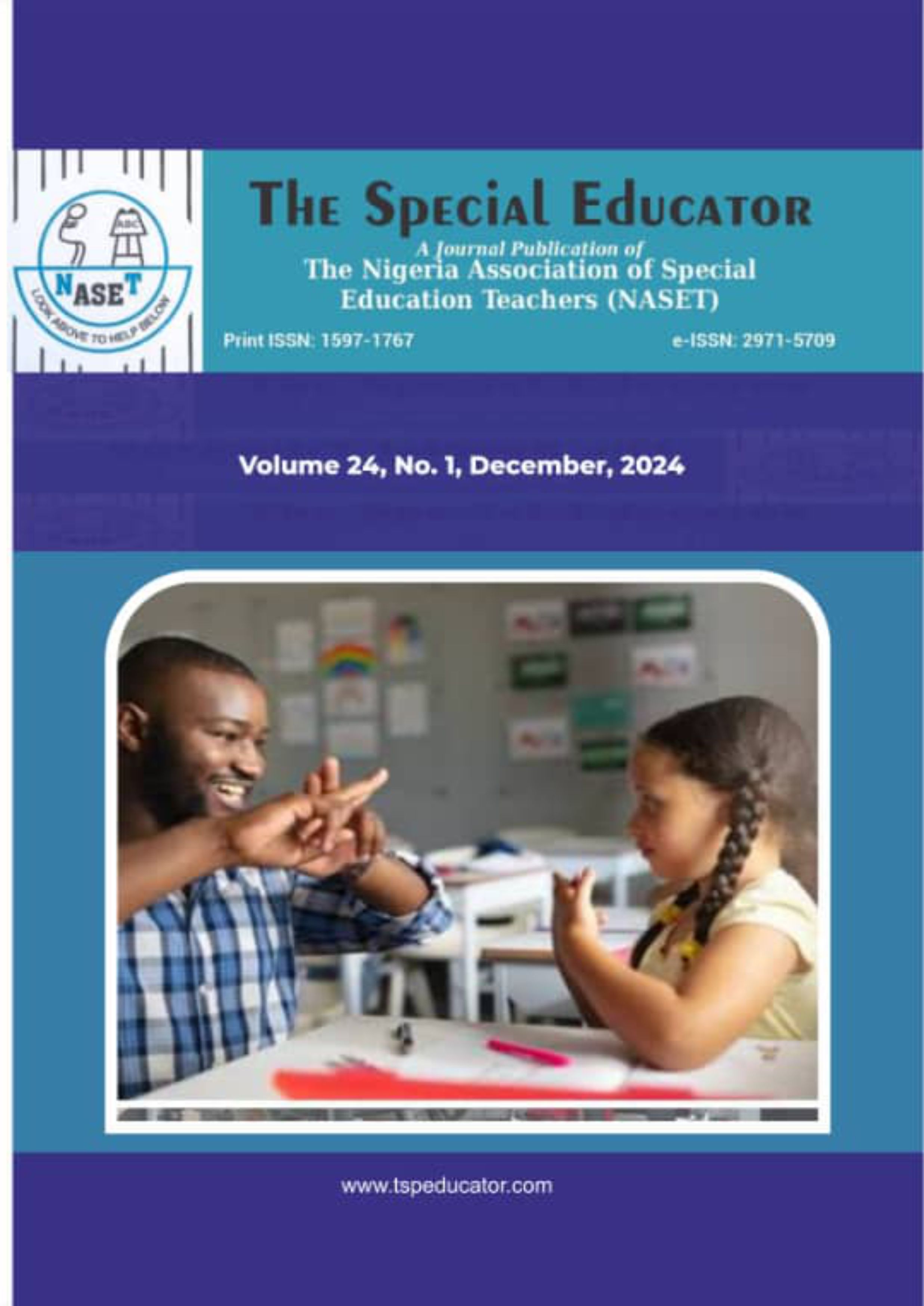Role of Assistive Technology in Inclusive Education Practice in Special Needs Education: Challenges and Opportunities
Keywords:
Assistive Technology, Inclusive Education, Disability, AccessibilityAbstract
This paper explores the benefits of assistive technology (AT) in fostering inclusive learning in Nigeria. Despite the benefits of assistive technology, its implementation in Nigeria faces several challenges, including a lack of awareness, inadequate funding, and a shortage of qualified professionals. However, there are also opportunities for assistive technology in promoting inclusive education in Nigeria, including improving accessibility and participation, enhancing communication, and collaboration. The paper argues that there are ways to tackle the challenges and exploit the opportunities, such as raising awareness, providing funding and resources, establishing policies and programs, and encouraging public-private partnerships. Assistive technology has the ability to change the lives of individuals with disabilities in Nigeria, enabling them to fully participate in education and society, according to the report.
References
Ahmed, A. (2018). Perceptions of using Assistive Technology for students with disabilities in the classroom. International Journal of Special Education, 33(1),129-139.
Aftah, M. J., Bano, H., Qureshi, M. S., Nadeem, H.A., & Qamar, A.M. (2022). Role of assistive technology in promotion of inclusive education for children with disabilities: Special educator’s narrative. Multicultural Education 8(1),325-334. http://doi.org/10.5281/zenodo.6359453
Assistive Technology Industry Association. (2023). What is AT? https://www.atia.org/home/at-resourses/what-is-at/
Assistive Technology Act of 2004, Pub. L. No. 108-364 (2004). https://www.govinfo.gov/app/details/108publ364
Auwal, A.A., Abdullah, U. A., Aminis, Y., & Hussaini, U. (2021). Utilization of assistive technology in classroom for learners with special needs in an inclusive setting in Nigeria. The Special Educator, 20(1), 67-74. https://www.tspeducator.com/index.php/TSE/article/view/13
Bobmanuel, D.P. (2022). Enhancing teacher training programme for inclusive education in Nigeria. Journal of the Department of Special Education. University of calabar,7(47-56).
Bobmanuel, D. P., & Mbeakwe, N. U. (2024). Repositioning education for Nigerian learners with special needs through the use of assistive technology. Rivers State University Faculty of Education Conference Journal, 3(1), 246-257.
Dada, O.A., Anam, B., Obi, F.B., & Abilola, C. A. (2022). Special sport and recreational facilities for sustainable special needs education programme at primary school level in south-south, Nigeria. Journal of the Department of Special Education. University of Calabar,7(1-9).
Danlami, A. (2016). Role of assistive modern technology devices and software in educating children with special needs. National Journal of Special Needs Education, Department of Special Education, University of Bayero, Kano, 2(2-3).
Ebuenyi, I. D. (2020). Commentary: A case for assistive technology policy in Nigeria; leaving no one behind. Niger Delta Medical Journal, 4(4), 24-26
Emmanuel-Worgu, M. (2023). Impact of assistive technology (augmentative and alternative communication) in non-verbal special learners. A paper presented at the 34th Annual national conference of the Nigeria Association of Special Education Teachers held at Ibadan: University of Ibadan.
Evan, C. (2017). Positioning education of Nigerian child with visual impairment through information, communication technology (ICT) and assistive technology (AT). Jos. Aydee creation.
Eze, U. N., Eseadi, C., Okolo, C. C., Ugwu, L. I., Oboegbulem, A. I., Omeje, J. C., & Nwankwo, O. E. (2021). Effectiveness of a group-based assistive technology training program on communication skills of children with communication disorders in Nigeria. Assistive Technology, 33(3), 133-143.
Federal Ministry of Education (2004). National Policy on Education. Abuja: NERDC press.
Fernàndez-Batanero, J.M, Montenegro-Rueda, M., Fernàndez-Cerero, J., & García-Martínez. I. (2022). Assistive technology for inclusion of students with disabilities: A systematic review. Educational Technology Research and Development, 70(3),941-960 https://doi.org/10.1007/s11423-022-10127-7
Mabawonku, A. O., & Aladesote, B. A. (2020). Assistive technology in inclusive education: Opportunities and challenges in Nigeria. African Journal of Educational Studies in Mathematics and Sciences, 16(2), 63-76.
Mario, M. T., Sameshima, P., & Beecher. C. C. (2009). Enhancing TPACK with assistive technology: promoting inclusive practices on preservice teacher education. Contemporary Issues in Technology and Teacher Education,9(2). Retrieved from https://citejournal.org?volume-9/issues-2-09/general/enhancing-tpack-with-assistive-technology-promoting-inclusive-practice-in-preservice-teacher-education
Okolo, C. M., & Diedrich, J. (2014). Twenty-five years later: How is technology used in the education of students with disabilities? Results of a national survey. Journal of Special Education Technology, 29(1), 1-20.
Olanrewaju, A. F., & Popoola, B. I. (2020). Assistive technology for inclusive education in Nigeria: Prospects and challenges. International Journal of Disability, Development and Education, 67(1), 78-92.
Ozoji, E. D. (2005). Special needs education and rehabilitation for beginner professionals, (revived edition). Jos, Daka publication.
The Education for Persons with Special Educational Needs Act 2004 (No, 30 of 2004). Retrieved from https://www.irishstatutebook.ie
WHO & UNICEF. (2015). Assistive technology for children with disabilities: Creating opportunities for education, inclusion and participation. A discussion paper. Geneva: World Health Organization. http://www.unicef.org/media/126246/file/Assistive-Tech-Web.pdf


